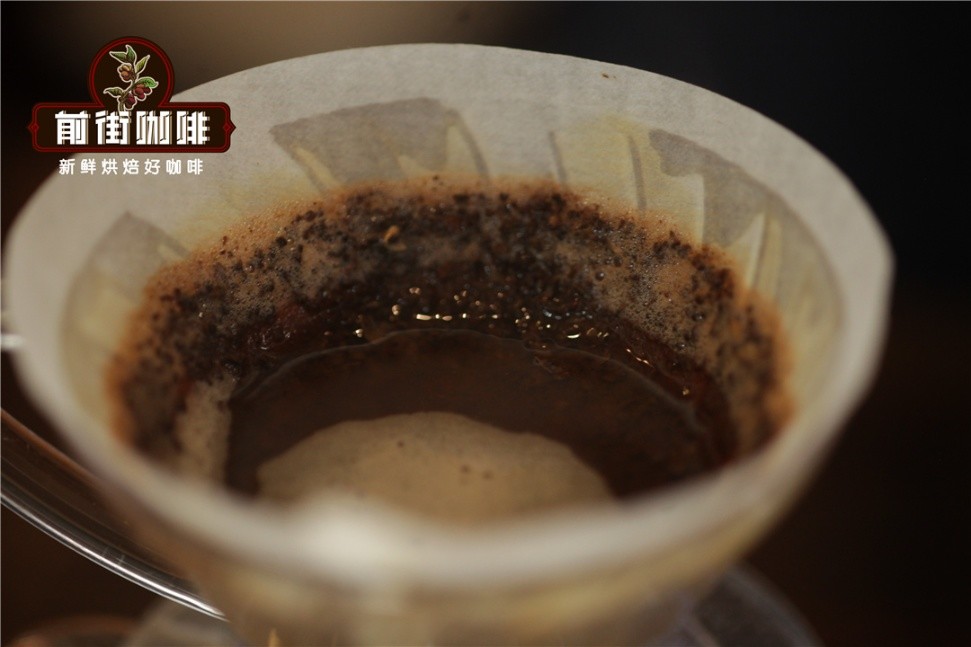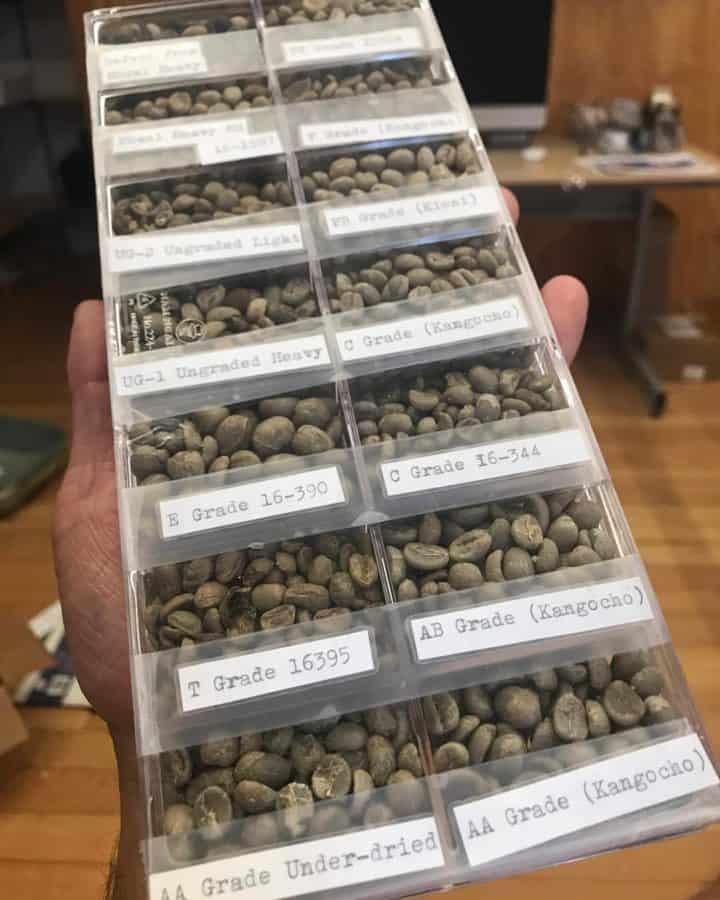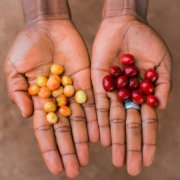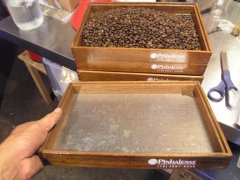Kenya SL28 34 hand temperature? Historical Story of K7BatianRuiru characteristics of Kenyan Coffee varieties
Qianjie has recommended Asaria coffee beans from Kenya more than once, and I believe you are already very familiar with the details of the cooking of this coffee bean.
Filter cup: v60 filter cup
Water temperature: 90-92 °C
Amount of powder: 15g
Powder / water ratio: 1:15
Degree of grinding: medium and fine grinding (Chinese standard No. 20 screen pass rate 80%) flushing and cooking method: segmented extraction
Steam with 30 grams of water for about 30 seconds, when 125 grams of water is injected around the center of the small flow, continue to inject water to the end of 225 grams when the water level is about to expose the powder bed, and remove the filter cup when the water level is about to expose the powder bed. The extraction time is 2 minutes 39 percent 00 ".

Variety
Kenya's red-orange, fertile volcanic soil and the region's mild climate as well as ideal equatorial sunshine and carefully selected varieties of Kenyan coffee plants
Now the mainstream of Kenyan coffee is the following five types of coffee:
SL 28
SL 34
K7
Ruiru 11
Batian
The first thing to understand is that the Scott Agricultural laboratory developed and studied SL28 and SL34 varieties from 1922 to 1944, and then developed K7 varieties. In the late 1960s, there was a very serious outbreak of coffee berry disease and leaf rust in Kenya, and the CRF Coffee Research Foundation took over the government-run laboratory and quickly developed resistant coffee varieties-Ruiru 11 and Batian.
Commercial coffee varieties produced by the Kenya Coffee Research Foundation include Ruiri 11, which grows well at all altitudes and is resistant to coffee berry disease and coffee leaf rust; SL34, which grows well at high altitudes with abundant rainfall; SL28, which grows well at mid-and high-altitude areas where coffee leaf rust is not severe; and Kent, which grows well at low altitudes where it is also vulnerable to coffee leaf rust.
The variety African K7 is the mission variety of the French Bourbon dynasty (small grain coffee variety Bourbon) grew up in Legetet real estate in Muhroni, Kenya. It was selected for cultivation according to the cupping test. Robusta coffee (Coffea canephora var.robusta) grows in the humid low-altitude areas of western Kenya.
SL28 coffee varieties
SL28 is the flagship of Kenyan coffee varieties. Buyers flocked to SL28 because of its excellent cup quality and high output. The Scott Agricultural Laboratory selected SL28-- from the Tanganyika drought-resistant variety in 1931, which can be traced back to the bourbon variety. The SL prefix is the acronym for Scott Agricultural Lab and 28 is the serial number.
Botany and characteristics of SL28
SL28 is resistant to water stress because it comes from a drought-resistant variety of Tanganyika. It can bear fruit without water for a long time. This is because SL28 has deep roots. You can even leave the SL28 tree unattended for years and then restore it to full production. This is a very unique quality.
The SL28 is a tall breed with a green but occasionally bronze shooting tip. The beans are big, the yield is high, and the trees bear fruit two years later. SL28 flourishes at mid-to high-altitude areas ranging from 1500 to 1700 masl or higher. Agronomists suggest planting 1330 trees per hectare to ensure high quality.
But in addition to the high cup quality, SL28 also has some disadvantages. SL28 varieties are susceptible to all major coffee diseases, including coffee berry disease (CBD), coffee leaf rust (CLR) and coffee bacterial wilt (BBC). These diseases have been threatening Kenya's most popular species.
SL34 coffee varieties
The variety of SL34 is very similar to SL28. The cup is of excellent quality and high output. However, buyers believe that the quality of SL34 is slightly lower than that of SL28.
Scott Agricultural Lab developed SL34 from the French Mission (bourbon) variety through single tree selection. But as mentioned earlier, a recent survey tells us that SL34 comes from a breed similar to Typica.
Botany and characteristics of SL34
In the wild, you can recognize SL34 by its tall stature and dark bronze color, sometimes even the tip of green buds. Like SL28, SL34 is water-resistant and deep-rooted. But berries and beans are bigger and heavier than SL28. It will take two years for SL34 to blossom and bear fruit.
SL34 varieties have adapted to high altitude areas, + 1500 masl, sufficient rainfall. But the danger is here. As SL34 flourishes in dense areas, farmers need strict agreements to control coffee berry disease. In addition to being vulnerable to CBD, CLR and BBC are also a threat.

K7 coffee variety
K7 coffee variety is the third successful variety developed by Scott Agricultural Laboratory. High output and good quality. You can trace the K7 back to the bourbon variety. Like its predecessor SL28 and SL34, K7 has drought resistance. But K7 has a function that other Scott Laboratories varieties lack.
Botany and characteristics of K7
K7 is the only traditional variety in Kenya that can resist certain races of CLR and CBD. This is why K7 is ideal for low-growth areas, from 1200 to 1500 masl, where CLR exists. After planting K7, you can expect to harvest cherries in two years' time.
K7 is high and has a wide range of side lines. The leaves are bronze with light bronze branches. Compared with SL28 and SL34 varieties rich in acidity, K7 has more subtle cup characteristics. The acidity is mild and subtle, but full-bodied.
Ruiru 11 coffee variety
In the late 1960s, when coffee berry disease and leaf rust were ubiquitous, the task of the Ruiruzhen Coffee Research Foundation was to develop disease-resistant varieties. In 1985, they successfully cultivated Ruiru 11. Ruiru 11 is a compound variety of 66 hybrid brothers and sisters. In other words, Ruiru 11 has the characteristics of 66 isolines.
Botany and characteristics of Ruiru 11
The Coffee Research Foundation named it Ruiru 11 for two reasons. First, the variety was developed in Ruiru Coffee Research Station, so the prefix is Ruiru. The code "11" indicates that it is the first breed developed by Kenyans and is released from an one-way hybrid; in other words, it is an F1 hybrid. Ruiru 11 is resistant to CBD and CLR and is suitable for all growth elevations in Kenya.
It does not produce cherries two years later, but 1.5 years later. Another feature that farmers like is compact growth. This means that Ruiru 11 plants do not need a lot of space to produce good yields. Instead of SL28 and SL34 planting 1330 trees per hectare, they can plant 2500 trees per hectare. Farmers can use Ruiru 11 trees to expand their yield.
In addition to the volume output, Ruiru 11 has several disadvantages. Unless grafted on a traditional variety, the variety is sensitive to water stress. And the quality is slightly lower than that of SL28, SL34 and K7 varieties.
Batian coffee varieties
The Coffee Research Foundation released another disease-resistant variety, Hachita, in 2010. Batian can resist CBD and CLR. But what makes Batian different is the morphological features similar to SL28. On site, you may mistake Batian for SL28. In the cup, the quality of Bada is matched with that of SL.
Botany and characteristics of Batian
Batian is an interesting breed. Because it combines the best of both worlds.
It is resistant to CBD and CLR.
High yield for farmers; plant density of 1900 trees per hectare.
Cherry ripens earlier than traditional varieties.
Beans are larger than other Kenyan varieties.
And of high quality; it can even compete with SL28 and SL34.
Most importantly, Batian went into production after 1.5 years. Batian is a tall variety with bronze leaves and big cherries and beans, just like SL34. If we deeply study the pedigree of this variety, we will find that Bada is a combination of beautiful varieties. There are traces of SL34, SL28, K7, SL4, Rum Sultan, N39 and even Timorese hybrid cars in Baton.
Batian has the potential to become the most popular variety in Kenya, but it is very sensitive to acidic soil.
Important Notice :
前街咖啡 FrontStreet Coffee has moved to new addredd:
FrontStreet Coffee Address: 315,Donghua East Road,GuangZhou
Tel:020 38364473
- Prev

Cinnamon roasted Kenya AA coffee bean flavor taste Kenyan coffee deep roasted light roasted flavor difference
When ranking the best coffee in the world, only a few important coffee-growing areas are often at the top of the list. One of the most famous countries is, of course, Kenya. Kenyans like all levels of baking, but most people choose light to moderate baking to better emphasize the subtle fruity of beans. Although different classifications (Kenya AA, AB, Dou) do not respond to heating
- Next

The influence of the selection of coffee beans on the importance of defective beans according to the screening and grading criteria of coffee beans in Ethiopia
In the coffee market, the size of coffee beans is very important. On the one hand, several coffee producers define their premium by the size of coffee beans. For example, the famous Kenyan AA coffee costs more than the smaller Kenyan AB coffee. When the screening size is large, the price will increase. The main theory on the market is that high-altitude coffee grows more slowly and has higher density than low-altitude coffee.
Related
- Detailed explanation of Jadeite planting Land in Panamanian Jadeite Manor introduction to the grading system of Jadeite competitive bidding, Red bid, Green bid and Rose Summer
- Story of Coffee planting in Brenka region of Costa Rica Stonehenge Manor anaerobic heavy honey treatment of flavor mouth
- What's on the barrel of Blue Mountain Coffee beans?
- Can American coffee also pull flowers? How to use hot American style to pull out a good-looking pattern?
- Can you make a cold extract with coffee beans? What is the right proportion for cold-extracted coffee formula?
- Indonesian PWN Gold Mandrine Coffee Origin Features Flavor How to Chong? Mandolin coffee is American.
- A brief introduction to the flavor characteristics of Brazilian yellow bourbon coffee beans
- What is the effect of different water quality on the flavor of cold-extracted coffee? What kind of water is best for brewing coffee?
- Why do you think of Rose Summer whenever you mention Panamanian coffee?
- Introduction to the characteristics of authentic blue mountain coffee bean producing areas? What is the CIB Coffee Authority in Jamaica?

